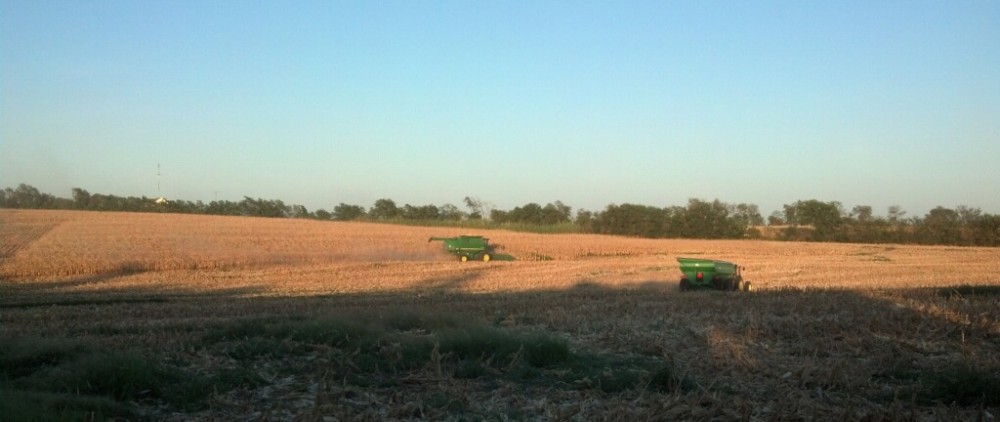How much corn do cows eat when cows are eating corn?
They can eat a bushel and a peck, a barrel and a heap, or, and I’m not talking in my sleep, they can eat very little. It depends how the cows are raised and what they are fed.
Cows are natural grazers, and their natural foods are the grasses of the fields. The stomach of the cow has many parts. The first part is called the rumen. The rumen is the chopper-upper, the part of the stomach that knocks about and breaks into pieces the grasses, and there the digestive process starts. Cows are ruminants because they chew the cud, the partially digested food regurgitated from the rumen. Sheep, antelopes, deer and giraffes do the same and are related to the cow. Bacteria in the rumen help the process, and life continues for the grass-fed cows grazing in their fields.
Farmers want cows to grow faster. It takes a lot of grass to grow a cow to market to market to sell a fat cow. With corn in the diet, the cow grows faster and fatter. So home again home again market is done, but with more jingles in the pocket from the sale of that sleeker and heavier grain-fed ruminant. Care must be taken here. Cows are not natural corn eaters. There was little corn growing in the pastures of their past. Serious stomach distress can result if a cow is switched too quickly or too completely from grass to grain, from stem to corn. The rumen is adaptable, though — it just needs a little time to appreciate its newly found sweet. Corn is candy to the cow, and the cow, hey, diddle, diddle, will jump over the moon for its treat.
Corn is big business. Corn is the most widely produced U.S. feed grain. Uncle Joe plants more corn than wheat, sorghum or cotton. Corn is Joe’s #1 crop. Corn is the #1 crop in the U.S.A.
Cars love corn. As much as cows have developed a marketable taste for corn, automobiles have demonstrated an even greater demand for the corn crop. Ethanol is a gasoline additive, and ethanol is well and efficiently produced from the corn cows crave. The environmental advantages of ethanol’s chemical structure and the role the two-carbon alcohol molecule plays in improving the pace of our combustion engines have fast promoted ethanol as the fuel enhancer of choice. With its newly gained popularity, ethanol production has skyrocketed, and that production is in turn fueled by truckload after truckload of newly harvested corn.
In the 2013-14 growing season, some 37% of the U.S. corn crop was spirited away for ethanol distillation and production. The next biggest chunk, 33% of the harvest, was served up to animals for treats. The ration to our cows, beef cattle and dairy, was 15%. It is true that the leftovers of ethanol manufacturing, the DDGS or Distillers Dried Grains with Solubles are routed back to agricultural uses, including feed. Our hungry cows received some portion of that DDGS — of the leftovers. Even with that, the writing on the wall is clear: The car is now king of the field, and the cow has fallen from its leap of prominence. Hey, diddle, diddle, the auto has run away with the moon.
Hickory Dickory dock, The cow ran up the clock, The clock struck thirty-seven, The cow fell from heaven, Hickory Dickory dock.
There’s a new king in town. Enjoy the ride in your grain-fed car.
Grandpa Jim
